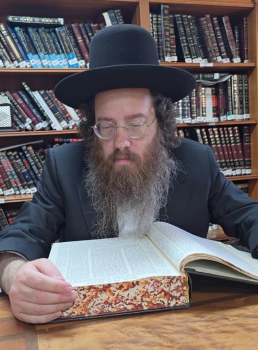From Burj Khalifa to Global Time Zones
Question
Answer
Thank you for your question.
The Burj Khalifa in Dubai Does offer a unique experience where visitors can observe the sunset twice: once from the lower floors and again from the higher floors if they take an elevator up. I remember when I visited it is truly a phenomenon and brings up an important halachic discussion about the observation of sunrise and sunset times from varying altitudes, which is relevant not just in Dubai but also for those traveling across different time zones.
Understanding the Halachic Sunrise: From a scientific standpoint, sunrise occurs when the upper part of the sun is exactly parallel to the horizon. However, in Jewish law (halacha), "halachic sunrise" is defined as the moment when the top of the sun becomes visible. This can create a discrepancy of about two minutes compared to the scientific sunrise.
When observing sunrise from a tall building, a question arises: If the residents of higher floors see the sun before those on the lower floors, is it considered sunrise for them? According to Halacha, the entire building is considered a unified location. Therefore, sunrise is officially recognized only when it can be observed from the ground floor. The upper floors must follow this timing, adhering to the principle that higher levels are legally treated as if they are on the ground beneath them.
This not only applies to a tall building but interestingly enough it is applicable when one is in a plane and before take off it is sunset and then after take off as he flies higher he can see the sun again never the less it is still considered like after sunset and if it is already night on the land below he can daven maariv.
Changing Time Zones:
The time of day anywhere on Earth is influenced by its longitudinal position, which determines its time zone. Time zones are geographical regions where the same standard time is used. When you travel across different time zones, the local time changes—either forward or backward—depending on your direction of travel. For instance, if you fly from the United States to Israel, you move through several time zones, typically experiencing a forward shift in local time.
From a halachic perspective, the time zone you are physically in at any moment (even high up in the air) dictates the times for religious obligations, such as prayer. So, when you're on a flight moving eastward towards Israel, you're moving into time zones where the local time is progressively later in the day. This movement can significantly shorten the available time you have for certain prayers. For example, if you had three hours to pray Mincha (the afternoon prayer) at your departure, this window might decrease to just an hour as you travel eastward and the local time advances. It’s important, therefore, to be mindful of these changes and plan your prayer times accordingly, aligning with the constantly shifting time zones you are flying over.
The idea of dividing the world into 24 time zones was proposed by Sir Sandford Fleming in 1876. However, we find a source for this concept of changing time zones in the Torah, in Exodus, when God told Moses that he would bring upon Egypt the tenth plague, as it states "at exactly midnight." However, when Moses relayed the message to the Egyptians, he said "around midnight," as stated in "kechatsot halaylah" (Exodus, Parashat Bo, Chapter 11, Verse 4).
Moses said, 'About midnight I will go out into the midst of Egypt.'" Rashi explains: Our Sages expounded it as "about midnight" (Exodus 12:29) and said, Moses stated "about midnight," implying near it, either before or after, and he did not say "at midnight," lest Pharaoh's astrologers err, and say Moses is surely wrong.
So, why did Moses change from the exact language that God used? Rabbi Yehoshua Leib Diskin explains that Egypt, being a large country, had different time zones depending on its position along the longitude. Only God knew the exact moment of midnight at each position. As midnight moved along the longitude, the firstborn were killed. However, the Egyptians didn't know this and would have seen the firstborn dying around midnight, some before and some after. Therefore, Moses relayed the message that it would be "around" midnight because that is how it would be perceived by the Egyptians, but in truth, it was exactly at midnight in each place as God said.
Wishing you well.
Source
Exodus, Parashat Bo, Chapter 11, Verse 4
Rabbi Yehoshua Leib Diskin (Rav of Yerushalayim)
